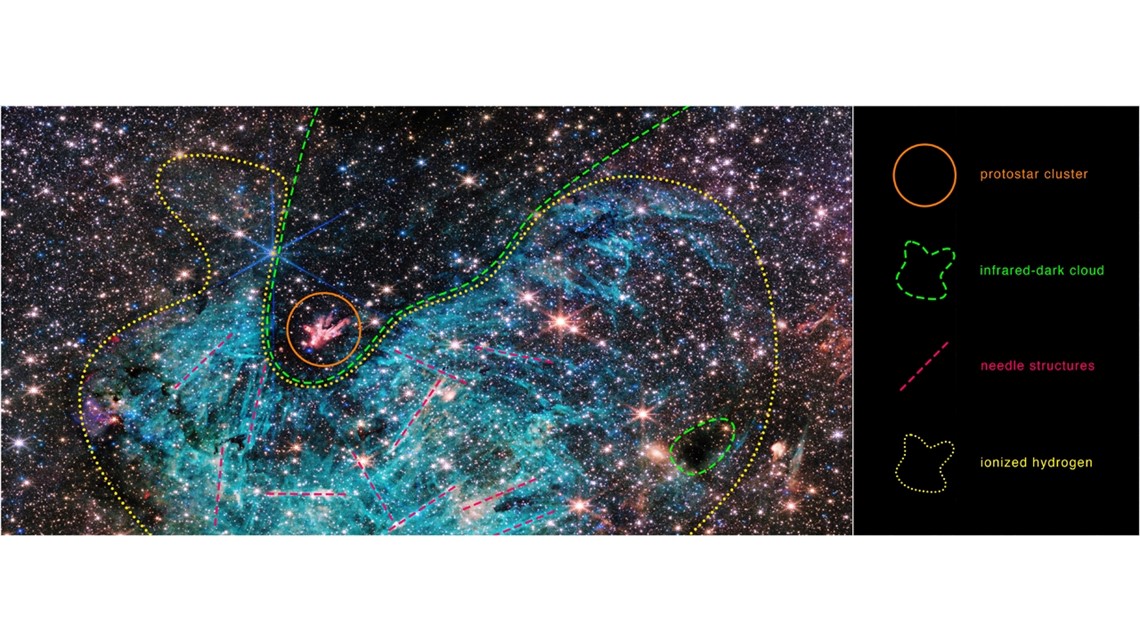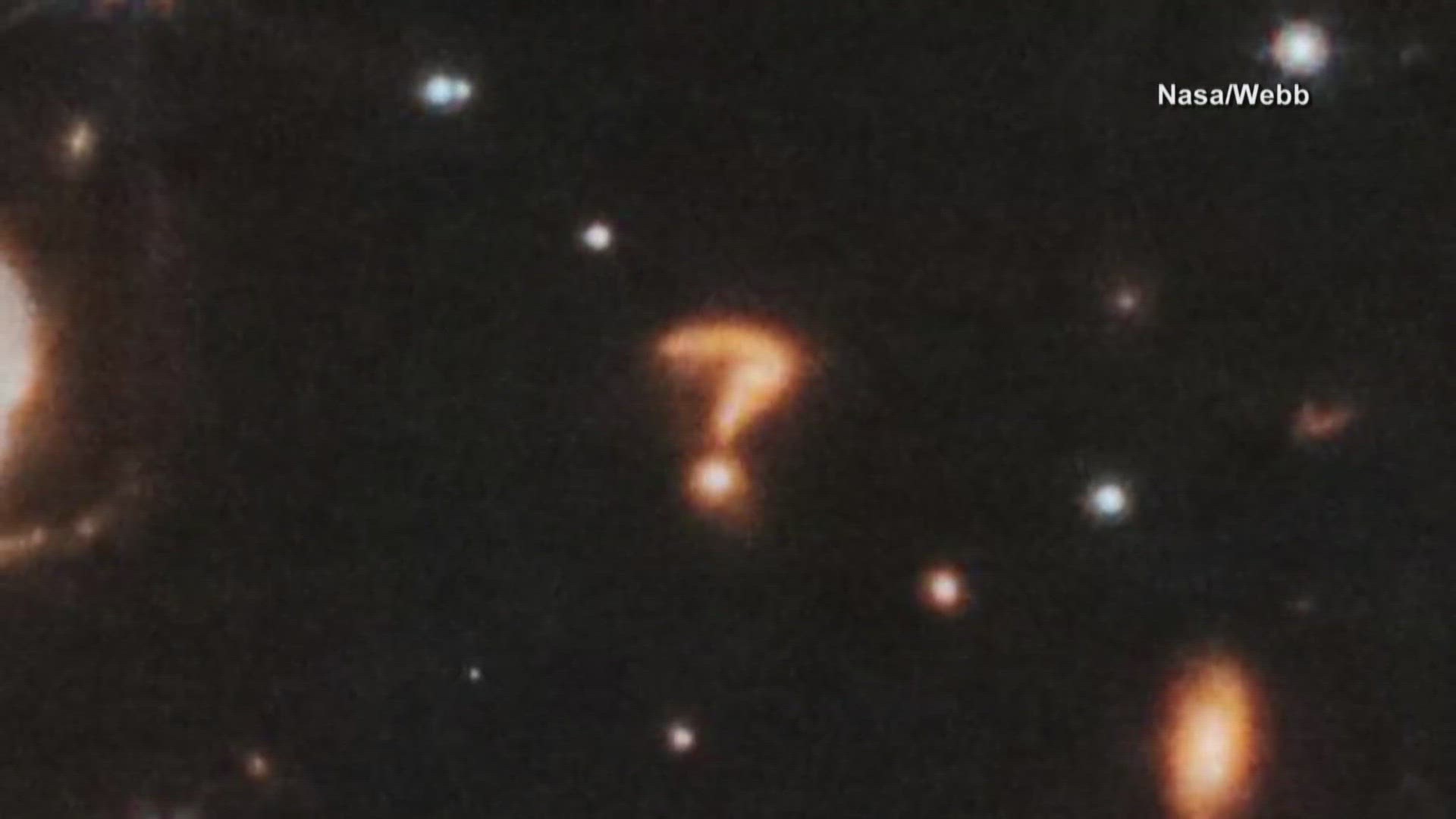Gorgeous new images captured from the James Webb Space Telescope show a dazzling array of half a million stars in the center of our galaxy that could help scientists untangle more mysteries of how stars form.
The Webb space telescope’s latest image - which tend to captivate the world with never-before-seen details from space - give rare insight into a spot near the very center of the galaxy called Sagittarius C.
Webb’s image of an area in the galactic center, where stars are not only fully formed, but in the process of forming, can give researchers insight into the star formation process as a whole, particularly as it happens in the heart of the Milky Way. The images potentially offer up new revelations about the formation of massive stars and the production of elements in their cores, according to NASA.
“There’s never been any infrared data on this region with the level of resolution and sensitivity we get with Webb, so we are seeing lots of features here for the first time,” said Samuel Crowe, an undergraduate student at University of Virginia – Charlottesville who leads an international team studying star formation in the Galactic Center, in a statement.
Sagittarius C is about 300-million light years away from Sagittarius A, the supermassive black hole at the core of our galaxy.
Of particular note for scientists was a protostar cluster seen among the 500,000 stars. Protostars represent stars that are still forming and gaining mass. They produce outflows large masses of gassy material, that glow “like a bonfire” in the midst of an infrared-dark cloud that is denoted energetically in waves of cyan.
“The galactic center is a crowded, tumultuous place. There are turbulent, magnetized gas clouds that are forming stars, which then impact the surrounding gas with their outflowing winds, jets, and radiation,” said Rubén Fedriani, a co-investigator of the project at the Instituto Astrofísica de Andalucía in Spain, in a statement. “Webb has provided us with a ton of data on this extreme environment, and we are just starting to dig into it.”


At 25,000 light years away from Earth though, the galactic center is still close enough for the JWST, the most powerful telescope in the history of humankind, to get a closer look. Outfitted with enhanced infrared vision, JWST has the ability to gaze back in time nearly back to the beginning of the Universe around 13.7 billion years ago.
If you’re reading this article on your phone, this latest image of Sagittarius C will be no bigger than your palm. It’s hard to comprehend the vastness of the image, so keep in mind one light year denotes 5.88 trillion miles.
Look at the image again. That distance, right there in the palm of your hand, represents 22 light years of distance.


It’s not the sheer vastness of the universe that has scientists marveling over the new image, it’s the details contained in it. Scientists had reported they observed a massive protostar over 30 times the mass of our own sun within the protostar cluster.
If you take another look at the image of Sagittarius C, you can see a crowded region of space, bursting with stars and clouds more than twice as wide as it is all. The protostar cluster is encircled below in orange, a crowd of space that will likely develop into a star.


And take a look at how much more space is contained within the space inside the green dashes. That area denotes an infrared dark cloud, which are dense molecular clouds, dark patches of cold dust and gas. Their low temperature and high densities mark potential birthplaces for the formation of massive stars, and they block infrared light and let out little light. Infrared dark clouds are often precursors to star clusters, according to NASA.
The team studying Sagittarius C will also investigate the existence of needle structures within the ionized hydrogen cloud, which the team said was disorganized and warranted further study.
“Massive stars are factories that produce heavy elements in their nuclear cores, so understanding them better is like learning the origin story of much of the universe,” Crowe said.
Sagittarius, The Archer, is 26,000 light-years away from us on Earth. We’re situated about two-thirds of the way out from the center in one of the Milky Way’s spiral arms.
The James Webb Space telescope launched into the atmosphere on Christmas Eve 2021. Since then, it’s sent back images of the oldest black hole ever discovered, enhanced images of the Pillars of Creation and mega-galaxies that are millions of years old.

